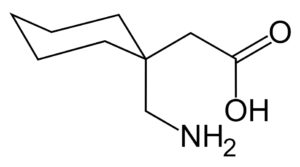For the last few years, the non-opioid medication Gabapentin (branded as Neurontin and predecessor to schedule V drug Lyrica) has skyrocketed in opioid overdose toxicology reports. Gabapentin’s direct role in these deaths remains largely unknown. But regardless, the trend prompted Kentucky state legislatures to have Gabapentin declared narcotic as a Schedule V controlled substance.

State Versus Federal Law
It’s important to understand that this law is not federal. That is, it passed into law through a Kentucky government agency and only applies to the state of Kentucky. But these state laws can have a huge effect on the rest of the nation as they spread to other states and potentially to the federal level. Since psychological drugs can take years to show their effects and interactions among a large population, public policy constantly changes. The more studies come out, the more policy reacts to this new information. That’s why we should not be surprised that finding Gabapentin in opiate overdose deaths caused Kentucky to classify it as a schedule V controlled substance.
What is a Narcotic Schedule V Controlled Substance?
We’ve written a whole lot on the definition of narcotic—including everything from Xanax to barbiturates vs benzos. The word “narcotic” is nebulous at best and means different things to different people. Depending on whether one seeks a legal, medical, or treatment definition, trying to peg the word “narcotic” presents a challenge.
It’s much easier to define controlled substances, as governments offer clear legal classifications for them. This is the official definition of Schedule V controlled substances:
Narcotic drugs containing non-narcotic active medicinal ingredients. Includes certain stimulants and depressants.
The DEA offers a more comprehensive definition of Schedule V controlled substances. But in reality, these definitions can change at the state level, which is what happened in the case of Kentucky when Gabapentin was declared narcotic by the state Cabinet Health and Family Services (CHFS). To understand why Kentucky’s CHFS chose to have Gabapentin declared narcotic, it helps to understand what Gabapentin actually does.
Gabapentin Declared Narcotic
So what is Gabapentin, anyway?
The FDA first approved Neurontin (brand name for Gabapentin) for use in 1993. Gabapentin has been available as a generic medication since 2004. The drug was originally used to treat seizures (typically those associated with epilepsy), nerve pain, and shingles symptoms. But this anticonvulsant drug has played a growing role in treatment for drug addiction as well.
 Although it’s used for pain treatment, Gabapentin does not classify as an opioid. That is why it’s ideal for addressing uncomfortable detox symptoms for recovering addicts. Until the recent spike in opioid overdose deaths, physicians did not observe abuse of this drug. But some treatment environments can actually encourage Gabapentin abuse.
Although it’s used for pain treatment, Gabapentin does not classify as an opioid. That is why it’s ideal for addressing uncomfortable detox symptoms for recovering addicts. Until the recent spike in opioid overdose deaths, physicians did not observe abuse of this drug. But some treatment environments can actually encourage Gabapentin abuse.
Drug Screenings Promote Gabapentin Abuse
In outpatient treatment, people agree to random drug screenings as a condition of treatment. This helps build accountability in a transitional phase. But it also creates an environment where those individuals can develop a “forbidden fruit” complex—that is, they seek ways to game the system. Urine drug screenings only check for the common drugs used for getting high. Think alcohol, opiates, benzos, et cetera. But since Gabapentin actually gets prescribed in treatment, there is no reason to test for the drug during screening. It’s expected to be in your system!
But some people report getting a “relaxed high” from Gabapentin. Although it doesn’t provide the same escape as their drug of choice, this alternative becomes a new fixation to chase while in treatment. And even if a person doesn’t overdose on Gabapentin itself, this mentality often leads to relapse. The mounting cooccurrence of Gabapentin with opioid overdose deaths acts as proof. And that’s why Kentucky chose to have Gabapentin declared narcotic.
Roots in Recovery
To avoid this trap, it’s important to establish strong roots in treatment. The therapeutic process addresses the deeper underlying causes which drive med seeking behavior. Modalities like WRAP and the Matrix Model offer structured approaches to recovery.
If you or a loved one is seeking treatment for a substance abuse problem, our addiction counselors are available 24/7 for free assessments over the phone: (833) 433-0448

